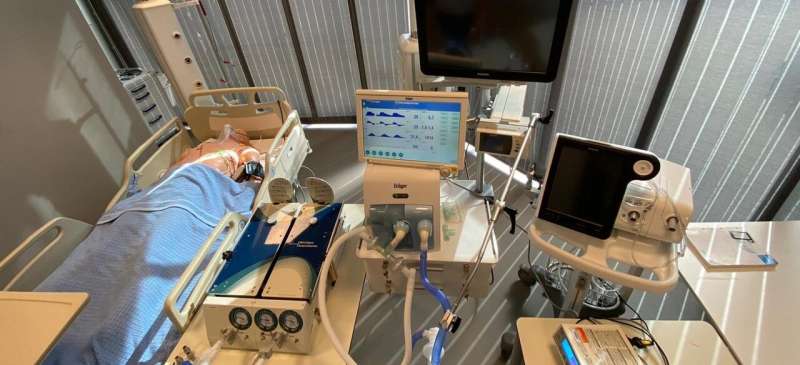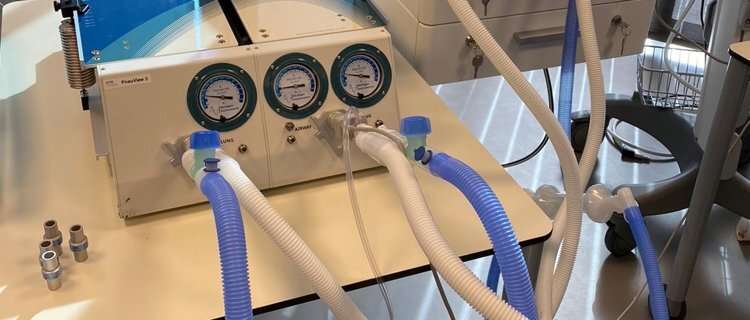Shared use of ventilation machines is possible in emergency situations

"Splitting the ventilator," connecting two patients to one ventilation machine, is a feasible option in emergency situations during the COVID-19 crisis, especially in situations of shortage of this equipment. This is what researchers of the Technical Medical Centre of the University of Twente propose. Using existing medical equipment, they designed and tested the procedure on several types of machines, using a double artificial lung. Experts of the hospitals Radboudumc (Nijmegen), Amsterdam UMC and Medisch Spectrum Twente (Enschede) established a protocol for using this technique with utmost care. The Dutch Intensive Care Society has published this protocol online.
Using one machine for two patients at the same time is only possible during the phase of fully assisted ventilation. Still, patients differ in many respects, including lung capacity. The system can deal with these differences. As soon as the patient partly takes over breathing by himself again, splitted ventilation is no longer possible.
Separation
Existing ventilation machines can be used for two patients using relatively simple equipment. It is clear that patients have to be fully separated. The machine not only prepares the inflow of air, it also captures and filters the outflow. For two patients, two input and two output tubes are needed. Splitting of the input and output can then be done using valves and filters. The display of the machine will only indicate a one patient result, so the researchers recommend including sensors in both sets of tubes. This method has been tested on three types of machines, covering 80 to 90 percent of the market in the Netherlands.
Using existing equipment
Technical Medical Centre has performed successful tests on a so-called Michigan test lung. This is an advanced simulator with two lungs, of which the individual properties can be modified. It is used for tests with various versions of machines, tubes, connecting parts and valves. As the equipment has to be widely available quickly, the design is based upon existing resources already in use in hospitals. Together with suppliers, the team selected a set of existing tools for testing. The researchers will keep a keen eye on developments, and will be able to perform additional analyses if needed. The results will be shared with the Dutch Intensive Care Society (NVIC) and the Dutch Society for Medical Physics (NVKF).
The research team, led by Professor Ruud Verdaasdonk, Professor of Health Technology Implementation, consists of intensive care doctors, lung physiologists, engineers, clinical physicists and technical physicians of University of Twente's Technical Medical Centre and the hospitals Radboudumc, Amsterdam UMC and Medisch Spectrum Twente. An important contribution comes from Holland Innovative, advising on risk analysis and regulation for medical supplies.




















